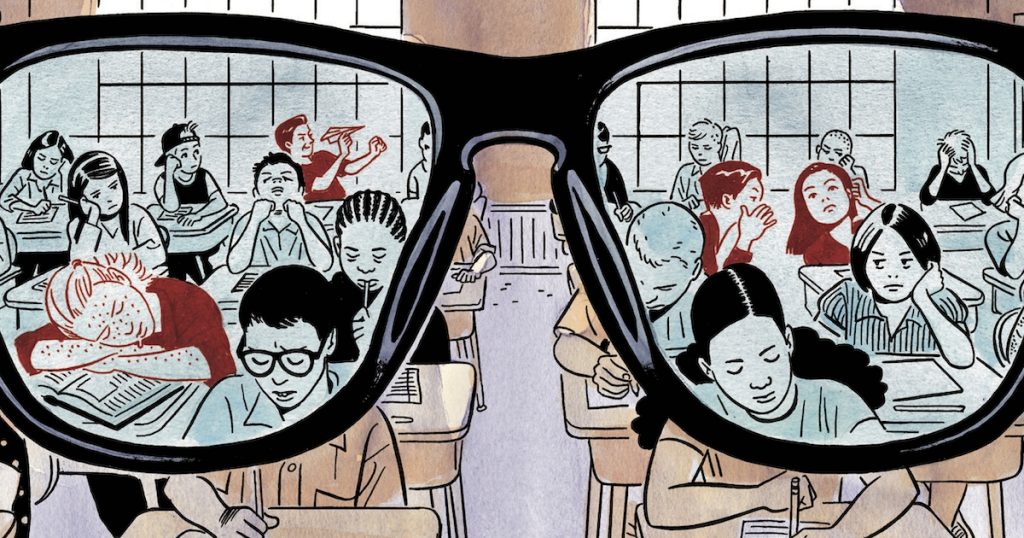JAKARTA, studyinca.ac.id – Discipline reform in schools is an essential movement aimed at transforming how educators manage student behavior. The shift from traditional punitive measures to restorative approaches emphasizes repairing harm, fostering relationships, and building a supportive community. This article delves into what really happens inside classrooms during this transition, examining the effects on student behavior, classroom dynamics, and the broader school environment.
Understanding Discipline Reform

1. Definition of Discipline Reform
Discipline reform involves revising existing disciplinary policies and practices to promote positive behavior and a more inclusive school culture. The focus is on creating systems that support learning and development rather than simply punishing misbehavior.
2. Key Principles of Restorative Approaches
- Accountability: Encouraging students to take responsibility for their actions and understand their impact on others.
- Community Building: Fostering a sense of belonging and mutual respect among students and staff.
- Repairing Harm: Focusing on making amends and restoring relationships rather than imposing punitive consequences.
What Happens Inside Classrooms
1. Changes in Classroom Dynamics
The transition to restorative approaches significantly alters the dynamics within classrooms. Teachers and students work collaboratively to create an environment that prioritizes respect and understanding.
Observations:
- Increased Student Engagement: Students are more likely to participate in discussions and activities when they feel their voices are heard and valued.
- Collaborative Conflict Resolution: Conflicts are addressed through dialogue and mediation, encouraging students to resolve issues constructively.
2. Impact on Student Behavior
Restorative approaches often lead to positive changes in student behavior, contributing to a more harmonious school environment.
Observations:
- Reduction in Disciplinary Incidents: Schools implementing restorative practices frequently report fewer suspensions and expulsions, as students learn alternative ways to handle conflicts.
- Improved Interpersonal Relationships: Students develop stronger relationships with peers and teachers, fostering a supportive community where everyone feels safe.
3. Teacher Experiences and Adaptations
While many educators embrace restorative practices, adapting to this new approach can present challenges.
Observations:
- Professional Development Needs: Teachers often require training to effectively implement restorative practices, including conflict resolution and facilitation skills.
- Navigating Resistance: Some educators may initially resist the shift, feeling uncertain about how to manage discipline without traditional punitive measures.
Success Stories and Positive Outcomes
1. Establishing a Positive School Culture
Schools that successfully adopt restorative approaches often experience a significant improvement in school culture, characterized by respect, empathy, and collaboration.
Examples:
- Peer Mediation Programs: Implementing peer mediation allows students to take an active role in resolving conflicts, promoting leadership and accountability.
- Community Circles: Regular community circles provide a platform for students to share their thoughts and feelings, enhancing trust and connection.
2. Academic Benefits
A positive and respectful school environment can lead to improved academic performance. When students feel safe and supported, they are more likely to engage in learning.
Observations:
- Higher Engagement Levels: Students in restorative environments often show increased enthusiasm for learning, leading to better academic outcomes.
- Improved Attendance: Schools that embrace discipline reform frequently see higher attendance rates, as students feel more connected to their school community.
Challenges in Implementing Discipline Reform
1. Resource Allocation
Implementing restorative practices requires adequate resources, including training for staff and materials for programs. Budget constraints can pose challenges for schools.
2. Cultural Shifts
Transitioning from a punitive mindset to a restorative one necessitates a cultural change within the school community. Resistance to change can slow progress.
3. Consistency in Application
For restorative practices to be effective, they must be consistently applied across the school. Inconsistent implementation can lead to confusion and frustration among students and staff.
Conclusion
Discipline reform through restorative approaches represents a transformative shift in how schools address student behavior and foster a positive learning environment. Inside classrooms, this reform leads to enhanced collaboration, improved relationships, and a greater sense of community among students and teachers.
While challenges exist, the success stories emerging from schools implementing restorative practices highlight the potential for meaningful change. By prioritizing accountability, community building, and repairing harm, schools can create environments where students feel valued and empowered to succeed.
As we continue to explore and refine these approaches, it is crucial to provide ongoing training, support, and resources to ensure that discipline reform can thrive, ultimately benefiting students, educators, and the entire school community.
Improve Your Abilities: Explore Our content on Knowledge
Take a Look at Our Latest Article on Global Citizenship!

